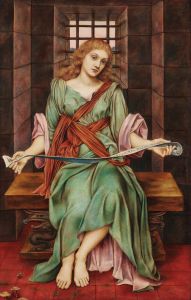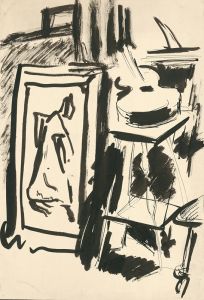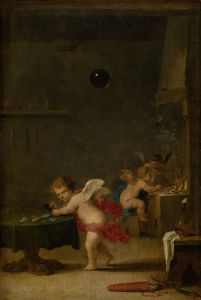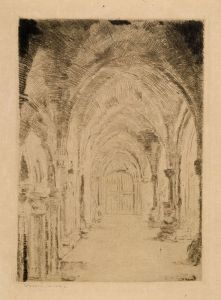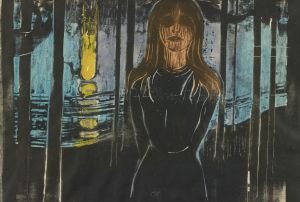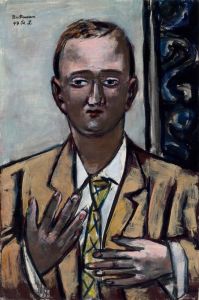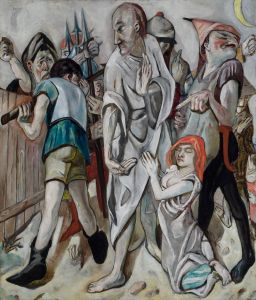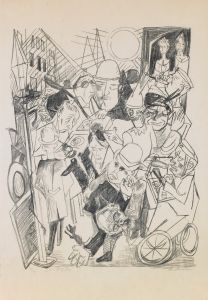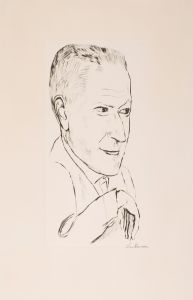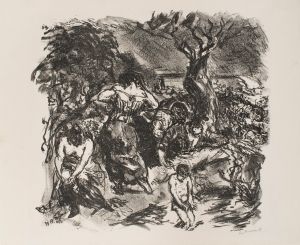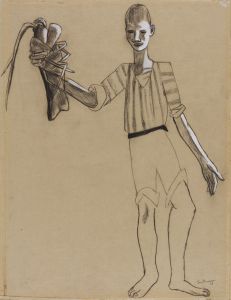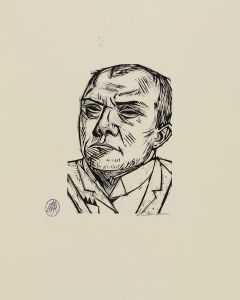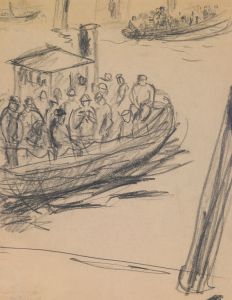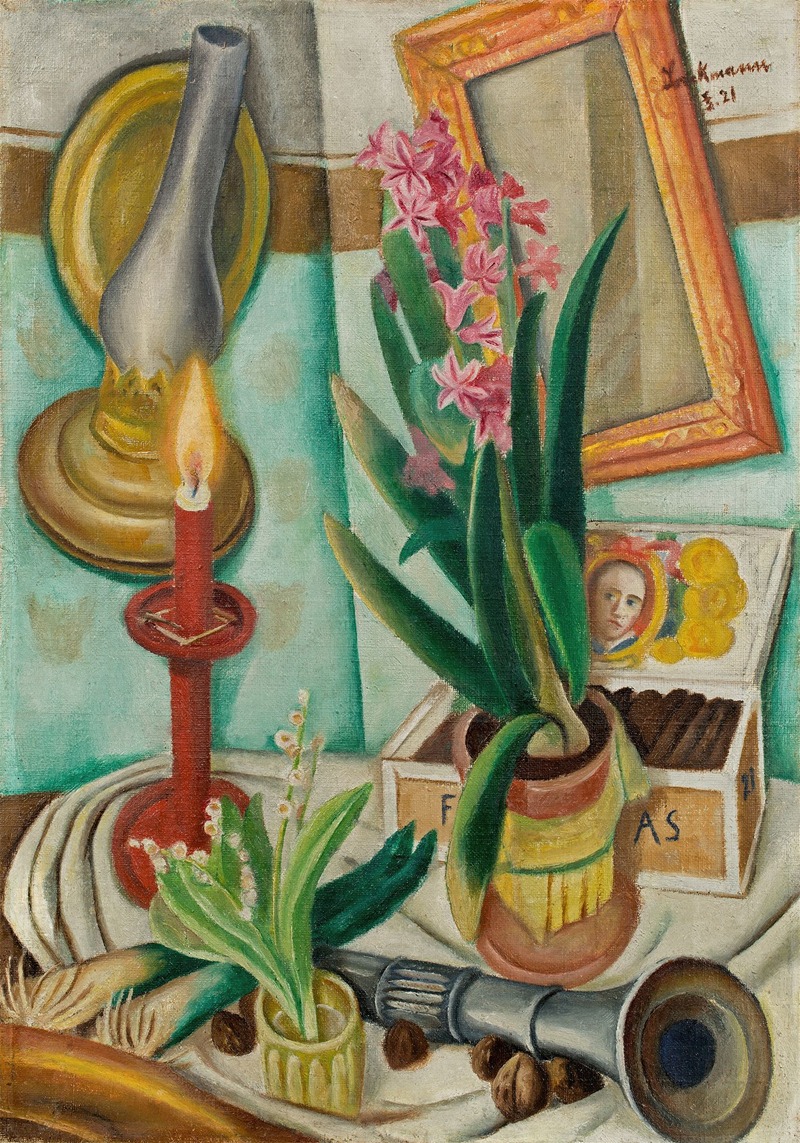
Stilleben mit brennender Kerze
A hand-painted replica of Max Beckmann’s masterpiece Stilleben mit brennender Kerze, meticulously crafted by professional artists to capture the true essence of the original. Each piece is created with museum-quality canvas and rare mineral pigments, carefully painted by experienced artists with delicate brushstrokes and rich, layered colors to perfectly recreate the texture of the original artwork. Unlike machine-printed reproductions, this hand-painted version brings the painting to life, infused with the artist’s emotions and skill in every stroke. Whether for personal collection or home decoration, it instantly elevates the artistic atmosphere of any space.
"Stilleben mit brennender Kerze" (Still Life with Burning Candle) is a painting by the German artist Max Beckmann, a prominent figure in the Expressionist movement. Beckmann, born in Leipzig in 1884, is known for his unique style that blends elements of Expressionism, New Objectivity, and Symbolism. His works often reflect the tumultuous socio-political landscape of early 20th-century Europe, marked by two World Wars and significant cultural shifts.
The painting "Stilleben mit brennender Kerze" was created in 1921, a period when Beckmann was transitioning from his earlier Expressionist style to a more structured and symbolic approach. This shift is evident in the painting's composition and thematic elements. The still life genre, traditionally associated with the depiction of inanimate objects, is used by Beckmann to explore deeper existential themes.
In "Stilleben mit brennender Kerze," Beckmann employs a restrained color palette, dominated by dark tones and the warm glow of the candlelight. The burning candle, a central motif in the painting, is a powerful symbol often associated with the passage of time, mortality, and the fleeting nature of life. This symbolism is consistent with Beckmann's broader oeuvre, which frequently grapples with themes of life, death, and the human condition.
The composition of the painting is carefully balanced, with the candle placed prominently in the foreground, casting light on the surrounding objects. These objects, which may include books, a skull, or other items, are arranged in a manner that suggests a meditation on knowledge, mortality, and the ephemeral nature of existence. Beckmann's use of chiaroscuro, the contrast between light and dark, enhances the dramatic effect of the scene, drawing the viewer's attention to the interplay between light and shadow.
Beckmann's work during this period is characterized by a sense of introspection and a focus on the inner world of the individual. "Stilleben mit brennender Kerze" reflects this introspective quality, inviting viewers to contemplate the deeper meanings behind the seemingly simple arrangement of objects. The painting is a testament to Beckmann's ability to infuse traditional genres with profound philosophical and existential questions.
Throughout his career, Beckmann's art was shaped by his personal experiences and the broader historical context of his time. Having served as a medical orderly during World War I, he was deeply affected by the horrors of war, which influenced his artistic vision. His works often convey a sense of tension and unease, reflecting the instability and uncertainty of the era.
"Stilleben mit brennender Kerze" is housed in a private collection, and like many of Beckmann's works, it continues to be studied and appreciated for its complex interplay of form, symbolism, and emotion. Beckmann's legacy as a leading figure in 20th-century art endures, with his paintings offering a window into the psychological and existential concerns of his time.





